The Dutch oven is said to date back to the Netherlands in the early 1700s. Metal cooking utensils were imported into Britain and in 1704, Abraham Darby visited the Netherlands to observe the process used by the Dutch, whose process used dry sand to give their pots a smoother finish. How it came to be in the US is unknown but the final design of the Dutch oven has been ascribed to Paul Revere who is also said to have created the flanged lid. When Americans began exploring further west, the Dutch oven became a popular tool for the mountain men and Native Americans. In fact, it was reported by some that George Washington used the Dutch oven to feed his troops during the Revolutionary War. Joseph Lodge, in 1896, built a cast iron foundry in Tennessee and the Dutch oven fast became his leading product and in fact, is still the best producer of Dutch ovens.
The oven has changed over time as it was made to be shallower and legs were added to allow it to sit above the coals and a flange ensured that the coals remained on the lid and thus out of the food. The Dutch oven was much loved by the colonials and Native Indians alike for its versatility and durability in fact, it could be used for boiling, roasting, baking, frying and stews. Recently though the Dutch oven has been replaced with the more advanced kitchen cooking vessels and appliances however, the great taste of a meal cooked in a thick-walled cast iron pot with a tight fitting lid cannot be replicated so the camp oven as it is commonly referred to, is still used by many across the globe. DUTCH OVENS
Types
Youre standing in the aisle of the store and there are Dutch ovens of all sizes, aluminum and cast iron, kitchen and camp ovens, should the pot be pre-seasoned or not? Some of the several names you will hear when encountering Dutch ovens include, camp, outdoor, kitchen or bean pots but dont let this get in the way of choosing and enjoying a good Dutch oven. Camp and outdoor ovens are one and the same whilst kitchen and bean pots are the same type of oven. ALUMINUM DUTCH OVEN The aluminum Dutch oven is ideal for those with physical limitations and is ideal for a hiking trip! Aluminum is easier to clean with plain old soap and water and to care for as it does not rust and unlike cast iron pots, does not require seasoning.
In fact, some models have a non-stick surface. An aluminum Dutch oven heats faster and does not discolor food. However, there are a few limitations to the aluminum Dutch oven. An aluminum pot will melt if it gets too hot whilst windy conditions mean that there will be more fluctuations that with cast iron. Stove, bean or kitchen pots as the aluminum Dutch is also known as, is flat bottomed and has no legs which makes it ideal to use on a wood burning stove. The lids are dome shaped.
The bean pot can be used on propane burner, on a regular stove at home or even on a tripod over a fire. The aluminum Dutch oven is perfect for the baking of bread and making gravy. CAST-IRON DUTCH OVEN Cast-iron is the preferred material for a Dutch oven and a good quality cast-iron pot can last for generations. Cast-iron pots distribute heat evenly and retain heat for a longer time, this ensures that less heat is needed to cook food and the pot can be removed from the heat before the food is done as the retained heat will complete the cooking process. This also means that less fuel is required. Food remains warmer for longer but food that requires to be served at a certain temperature needs to be removed from the pan as the pan cools slower.
High temperatures are tolerated by cast-iron and it is less likely to be affected by windy weather conditions as it reacts more slowly to heat changes. The heavy lid of the cast-iron pot seals in the steam keeping the food tender and moist. The cast-iron Dutch oven, also known as the camp or outdoor oven is preferred for camp fire and outdoor cooking. These pots come in a range of sizes from 5 to 22 inches in diameter and from 3 to about 9 inches deep. However, bear in mind that the larger the pan, the heavier it is when full. The camp oven is usually flat bottomed and has 3 short legs which allows the circulation of air beneath the pan onto the coals.
A strong wire handle allows the pan to be positioned onto the fire or when removing the pan from the heat. The flat lid with a 1 to 2 inch lid can be used as a frying pan and allows hot coals to be placed on top of the oven. As cast-iron Dutch ovens are costly, you may choose to check out the junk or thrift stores for a good quality oven to save yourself some cash. When purchasing a used Dutch oven, ensure that there are no cracks, chips, rust spots or casting imperfections. The thickness of the metal must be checked as any inconsistencies will reflect in your cooking. Make certain you examine the pot and the lid, inside and out.
The lid should fit snugly and not too tight and there should be no rocking motion when the lid is on the pot. If you choose a camping pot, ensure that the legs are in good condition. The wire bail should also be of good strength and should move easily. A loop handles makes it easier to pick up with a hook. Dutch ovens with riveted tabs should be avoided at all costs! DUTCH OVENS
How to Clean & Season
Youve got your Dutch oven, either a brand, spanking new one or one from the rummage sale. Now, whats the next step? All new pans, whether cast-iron or aluminum have a protective coat on them and this must be removed before cooking can be done in the pan.
An old pan, whether inherited or bought at the garage sale will require seasoning. Why the need to season, you ask? Well, seasoning adds flavor, prevents rusting, makes cleaning easier and helps prevent food from sticking as the oil forms a carbon non-stick coating when heated. If your oven is a new, aluminum one, then you need to follow one easy step to clean it before you season it. Wash the Dutch oven with soap and warm water. If the oven is of cast-iron, then wash with warm water and use steel wool and elbow grease to give it a good scrubbing. The next step is the seasoning process of which there are four methods.
Three are outdoor methods and one indoor method. INDOOR METHOD Preheat your oven to 350F and ensure that all the windows are open and the smoke alarm turned off. Place the pot and lid into the heated oven and allow to heat until it is too hot to handle. Remove from the heat. Use olive or vegetable oil or solid shortening and paper towels and rub a thin layer onto the pan. Never use margarine, butter or non-stick cooking spray.
Ensure that all the surfaces are coated including the legs before returning the pot and the lid to the top rack of the oven. Place a baking sheet below to catch any drippings. Leave to bake for an hour, turn off the heat, and leave the pot and lid to cool in the oven. Repeat the process, remove the pot and lid from the oven and wipe with a clean, dry cloth. This process can be done over the fireplace if you have one but make sure that the chimney flue has a good draw to minimize any grease smoke. OUTDOOR METHOD 1 On a hot fire, use the oven to fry fish or fries, etc.
When done, drain the oil and wipe the pot with several sheets of paper towels. OUTDOOR METHOD 2 On a hot fire, fry thick, sliced, unsalted bacon on the lid and in the pot. Remove and wipe the pan with paper towels. OUTDOOR METHOD 3 Turn the propane gas grill to low and place the Dutch oven in the grill to heat with the cover on. When the pan is warm, wipe on a thin layer of oil, either olive or vegetable oil. Return to the oven and replace the lid and cook for about an hour.








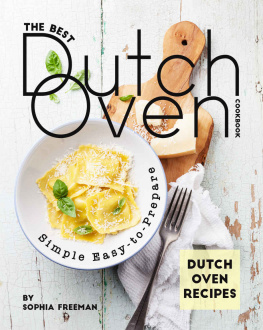



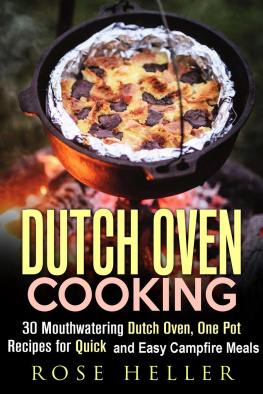
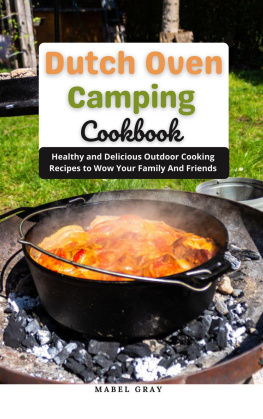



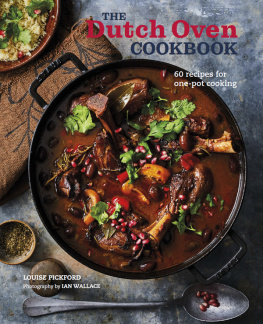
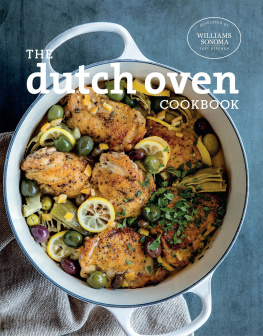
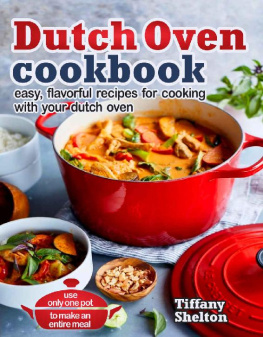
 http://www.amazon.com/dp/B00Q5OG2HU DUTCH OVENS
http://www.amazon.com/dp/B00Q5OG2HU DUTCH OVENS